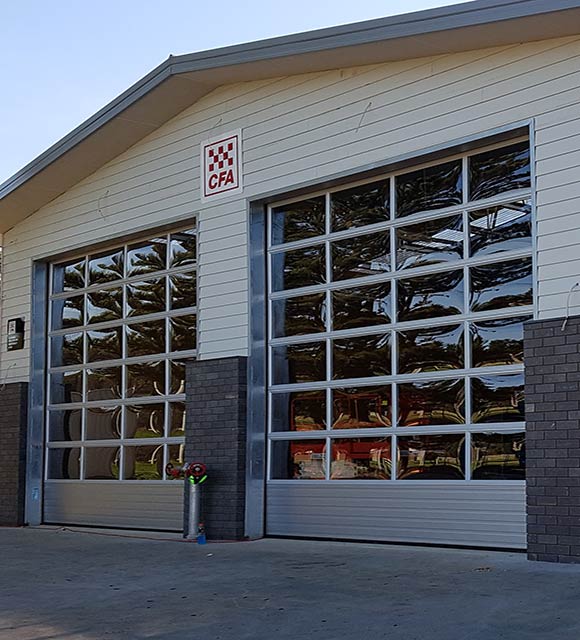Polyvinylchloride (PVC) is among the most frequently used thermoplastic polymers worldwide (next to a handful of more popular plastics such as PET or P.P.). It is white and extremely hard (before the introduction that plasticizers added to) plastic. PVC is more common than the majority of plastics. It was synthesized in 1872 before being commercially manufactured by the B.F. Goodrich Company in the 1920s.
In contrast, many other common household plastics were developed and made commercially viable during the 40s and the 1950s. PVC is most often used in the construction industry, but it is also used in signage, healthcare applications, and fibres for clothing. PVC was found accidentally twice before, the first time in 1832 by French scientist Henri Victor Regnault and later, in 1872, by the name of a German man identified as Eugene Baumann.
The Basic Forms and Functions that are Polyvinyl Chloride (PVC)
PVC clear plastic sheet is made in two different forms, one being a rigid, plasticized form of polymer (RPVC or uPVC), and the second is a flexible plastic. In its simplest version, PVC is characterized by its brittle yet rigid structure. While the plasticized form has many uses in various industries, the more rigid version of PVC has many uses. Industries like plumbing, agriculture, and sewage can make use of PVC for a variety of purposes.
Flexible or plasticized PVC is more flexible and bendable than uPVC because of the addition of plasticizers, such as phthalates (e.g. diisononyl-phthalate and DINP). Flexible PVC is used extensively for construction as insulation on electrical wires and flooring for hospitals, homes, schools, and other places where a clean atmosphere is important. In some instances, PVC can act as an effective substitute for rubber. Flexible PVC is also utilized in the construction industry as a piping system for siding and plumbing and siding, often referred to as the word “vinyl” throughout the United States. PVC pipe is usually identified through its “schedule” (e.g., Schedule 40 or Schedule 80). There are significant differences between the schedules. These are factors like the wall’s thickness, pressure rating and colour.
What is the reason PVC is often used?
As compared to other thermoplastic films materials, Polyvinyl Chloride (PVC) film has several advantages, such as:
- Durability. PVC is extremely tough, with exceptional resistance to damage caused by extreme environmental conditions, such as corrosion-causing chemicals, abrasions or shock, and impacts. These characteristics make it suitable for medium to long-term applications that require exposure to environmental conditions. That is why PVC fly strips for doors are used in the offices.
- Environmental and operational safety. PVC is safe and has been thoroughly tested for environmental impacts. It meets various national as well as international standards for health and safety that are set by U.S. Food and Drug Administration (FDA), Consumer Product Safety Commission (CPSC), National Sanitation Foundation (NSF) as well as International Safety Standards (ISS).
- Fire resistance. Because of its high chlorine content, PVC is extremely resistant to flames. It doesn’t easily ignite or generate a lot of heat when it is burned. However, because it may release harmful chemicals when it is melting or burning, anyone working with the material that involves open flames or extreme temperatures should take appropriate precautions to minimize the possibility of adverse health consequences. It also self-extinguishes.
- Non-conductivity. PVC doesn’t conduct electricity, making it suitable for being used as an insulator for mechanical and industrial parts and constructions.
- Cost-effectiveness. Although it has many benefits, PVC is inexpensive to fabricate and can be easily manipulated into the desired shapes and sizes. These characteristics make PVC a great material for industrial use.
- Versatility. PVC’s physical characteristics permit it to be used in various uses, as described below.
How Is PVC Film Used?
PVC film can be described as a type of PVC extensively used in industrial applications. Examples include:
Waterproof enclosures and products
The outstanding endurance and water-resistant properties of PVC film make it a great material for waterproof indoor and outdoor enclosures, as well as products like tents, canopies or shower curtains.
furniture and supply covers
PVC film is a fantastic product for making furniture covers, protective items like food delivery bags, and imitation leather. Covers and other products made from PVC films are waterproof, easy to maintain, and can be laminated for extra protection.
Windows and Siding
PVC’s insulation, heat resistance properties, and toughness make PVC film a great choice for window covers and siding.
Packaging Materials
Professionals in the industry use flexible and rigid PVC film to create packaging materials. For instance, flexible film is used to create seals that resist tampering for products such as consumer products, food, drinks, and pharmaceuticals. In comparison, the rigid film is ideal for packaging materials like clamshells.

